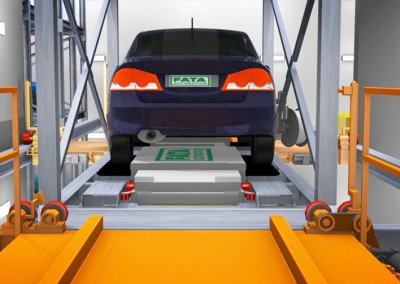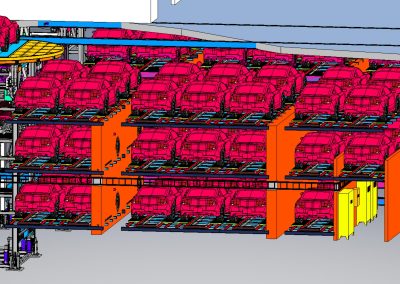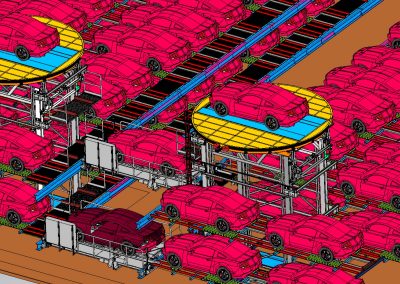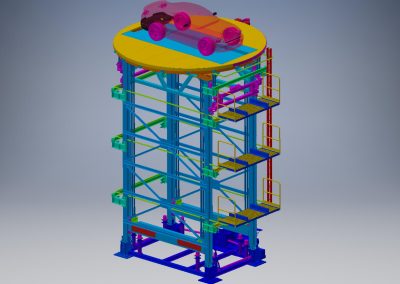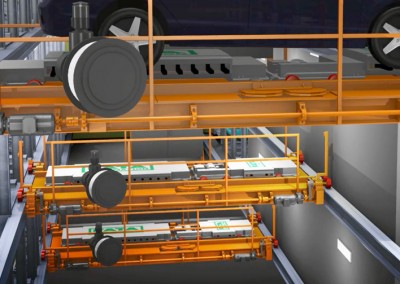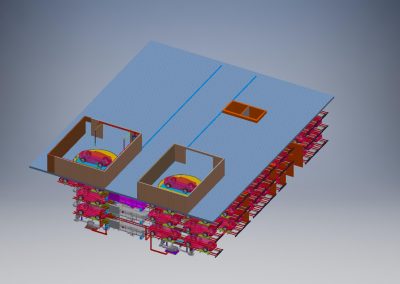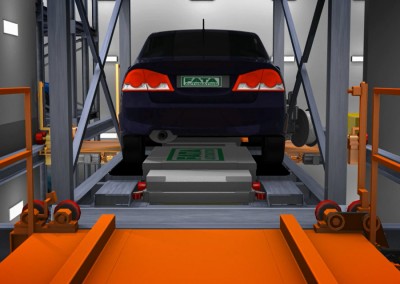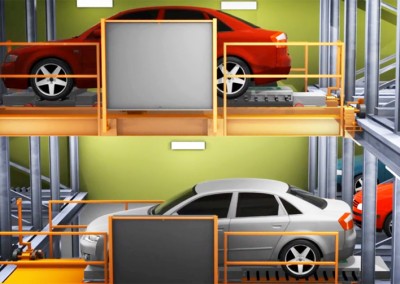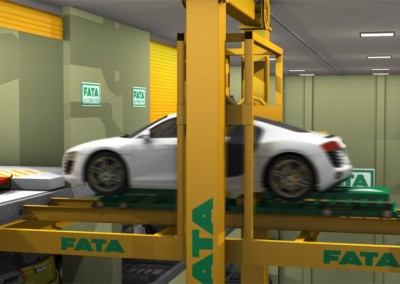Automated Parking Systems
Automated parking is the automated storage or parking of vehicles with no human intervention. The technology used to do this is based on FATA’s automated warehousing technology and FATA produces several different technologies used in its automated parking systems. From a driver’s
Some of the potential advantages of FATA’s automated parking systems over conventional parking are:
- Reduced construction costs through less excavation, air rights saving and less construction time
- Reduced operating costs through accelerated depreciation, lower ventilation and lighting requirements, lower operator costs and reduced insurance premiums
- Reduced land cost due to
smaller footprint - Added value from the space gained providing more leasable or sellable real estate
- Improved entitlements for developers
- More LEED points available
- Safe and secure parking for drivers and their vehicles
- Less CO2 emissions and more green spaces
- All parking spaces can be ADA compliant
The different types of Automated Parking Systems that FATA has to offer are:
Crane Systems
Crane parking systems utilize a single mechanism to simultaneously perform the horizontal and vertical movements of the vehicle to be parked or retrieved in the parking system. The simultaneous horizontal and vertical movements allow the vehicle platform to move to and from one parking spot to another very quickly. The crane mechanism moves horizontally on rails, typically located on the floor and ceiling of the parking system, and has a vertical elevator platform fitted where vehicles to be parked and retrieved are placed. This means that a floor-to-ceiling opening in the center of the system is required for the crane(s) to operate.
Read MorePlease visit the Video Gallery below to see a 3D rendering of this system functioning.
Puzzle Systems
Puzzle systems offer the densest form of automated parking, typically utilizing around 95% of the floor area, and are often used in smaller systems. In a horizontal puzzle system a grid of pallets covers a solid floor, or steel frame, and each pallet is supported by a set of rollers and belts that are driven by motors fitted to the support frames underneath each pallet location. The rollers and belts maneuver the pallets until the pallet with the required vehicle on is maneuvered to the desired location, e.g. parking module, elevator, etc. The pallet support frames are installed in all possible parking positions and typically there are two fewer pallets than support frames per floor which provides the necessary free spaces to maneuver the pallets.
Read MorePlease visit the Video Gallery below to see a 3D rendering of this system functioning.
Shuttle Systems
Shuttle systems utilize autonomous shuttles and elevators to park and retrieve vehicles. The number of shuttles in the system is typically flexible and is based around the client’s throughput and budgetary requirements. The shuttles move horizontally in a shuttle lane, which is either a recess in a solid floor or a set of rails in a steel or concrete structure, to a designated location. A robot, or pallet exchanger, or conveyor belts, located on the shuttle then park or retrieve a vehicle at the designated location by moving the vehicle from or to the shuttle and the parking space.
Please visit the Video Gallery below to see a 3D rendering of this system functioning.
Silo Systems
Silo systems are cylindrical systems typically with a single, centrally positioned mechanism used to park and retrieve vehicles. The central mechanism moves vertically and rotates simultaneously allowing the vehicle platform to move to and from one parking spot to another very quickly. Typically silo systems are installed underground, and are most suitable where soil conditions are particularly unfavorable, but can also be installed above ground.
Please visit the Video Gallery below to see a 3D rendering of this system functioning.
Tower Systems
Tower systems typically consist of a vehicle elevator with a parking space either side of the elevator shaft. This configuration is repeated over a number of levels to complete the parking tower. Typically there is a parking module located on the ground floor, where the vehicle is turned, and the vehicle elevator simple raises to one of the parking levels of the tower and deposits the vehicle sideways into a parking space. This process is reversed to retrieve a vehicle. As there is a single mechanism to park and retrieve vehicles system redundancy is an issue with tower systems.
Please visit the Video Gallery below to see a 3D rendering of this system functioning.
Please visit our Automated Parking Website for even more information.
Automated Parking Case Study
FATA Automation was challenged to develop an automated parking system for a medical facility in Brooklyn, New York. The area has no parking available, and the new building could not be made taller to accommodate a parking deck, due to city ordinances.
This left the Owner with only one option – Dig 3 levels under the building and install automated parking to get the vehicles down there and to park the greatest possible number of vehicles in the smallest space.
The system developed by FATA uses two Entry
In order to make retrieval of the vehicles fast and efficient, FATA also developed software that works in a “traffic cop” fashion to make and change decisions on which vehicle goes when – keeping cycle times fast and customer wait times as short as possible.
The system parks 131 vehicles and is expected to be operational in the Summer of 2019.
Photo Gallery


